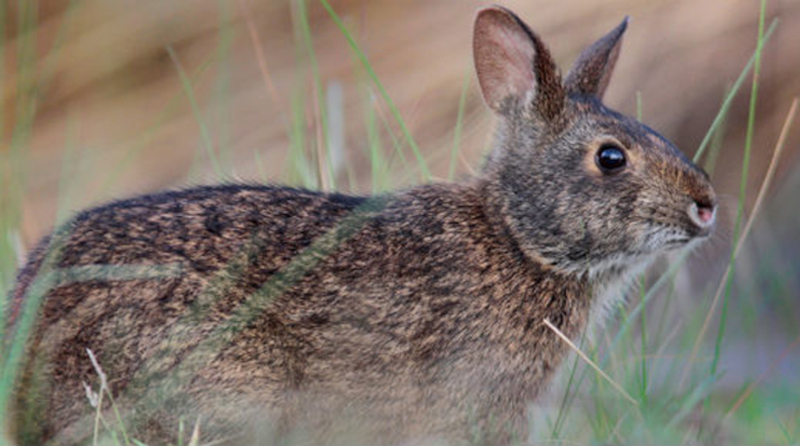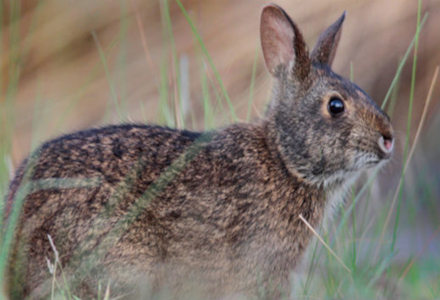
Photographer: Chad Anderson/USFWS
Public Domain Image
Lower Keys Marsh Rabbit Facts
- Firstly, the Lower Keys Marsh Rabbit (Sylvilagus palustris hefneri) remains perhaps the most endangered species of rabbit currently known to man. Those who discovered it chose, for reasons of their own, to name the dainty wonder of Nature in honor of Hugh Hefner.
- Furthermore, this dainty creature also holds yet another distinction. That’s because the newly recognized species ranks as the smallest and rarest of the three known marsh rabbit subspecies. Quite sadly, however, all three face serious threats to their continue existence.
- These threats consists of the same dangers that numerous other animals currently face. These include vehicular traffic, illegal dumping, domestic animals, invasive species, and, of course, climate change. For these reasons, the IUCN currently lists the animal as Endangered.
- In addition, this awesome species also remains isolated to only a very tiny area in the world. This isolation has been further reinforced by the rise in sea level and human habitation in its native area. Finally, this isolation may be the reason for an extreme degree of specialization displayed by the animal.
Related Articles
Viscacha Volcano Rabbit Chinchilla
Photographer: Tomfriedel
CC License: https://bit.ly/2yCTWYM
Lower Keys Marsh Rabbit Physical Description
Regardless of its other distinctions, the marvelous Lower Keys Marsh rabbit forms a small-to-medium sized species. Individuals also average about 15 in (380 mm) in length and 2.2-3.8 lbs (1.0-1.7 kg) in weight. However, this remarkable animal displays no discernible degree of sexual dimorphism.
Additionally, this wonderful variety of rabbit develops hind feet that range in total length from 2.5 – 3.1 in (65 – 80 mm). Not only that, but its distinctive ears range in length from 1.7 – 2.4 in (45 – 62 mm). These provide it with excellent hearing, which serves as a definite advantage in its native habitat.
In addition, the fur of this remarkable animal typically grows comparatively short. In coloring, it most commonly displays various dark brown shades over much of its body. However, most individuals display a grayish-white coloring on the underside. Yet the short tail typically appears a dark brown in color.
- Kingdom: Animalia
- Phylum: Chordata
- Class: Mammalia
- Order: Lagomorpha
- Family: Leporidae
- Genus: Sylvilagus
- Species: S. palustris
- Subspecies: S. p. hefneri
Photographer: Chad Anderson/USFWS
Public Domain Image
Lower Keys Marsh Rabbit Distribution, Habitat, and Ecology
The wonderful Lower Keys Marsh Rabbit apparently never had a large range to begin with. As the name indicates, the seemingly fragile animal inhabits the Florida Keys, in the United States, in North America. Yet sadly, the beautiful small creature now finds itself limited to an extremely tiny portion of the area.
This extremely restricted habitat range includes a few of the larger Lower Keys. Specifically, however, this covers Boca Chica, Saddlebunch, Sugarloaf, and Big Pine Keys and the small islands near these Keys. Further, research determined the habitat occupied by species to be limited to 633 acres in 1995, with only 81 suitable habitats.
It typically chooses areas of marsh, as the name implies. In addition, it prefers elevated sections, with sufficient plant cover for food, nesting, and protection. The animal has also become dependent on several specific plants for its diet. These include certain grasses, herbs, and sedges. Rather unfortunately, most of these have now been decimated by invasive species.
Species Sharing Its Range
Doll’s Eye Florida Panther American Crocodile
Check out our other articles on 10 Remarkable Rare Cetaceans, Jabuticaba, Psychedelic Frogfish, Golden Armadillo Lizard, Mount Erebus, Happy Face Spider, Blyde River Canyon

